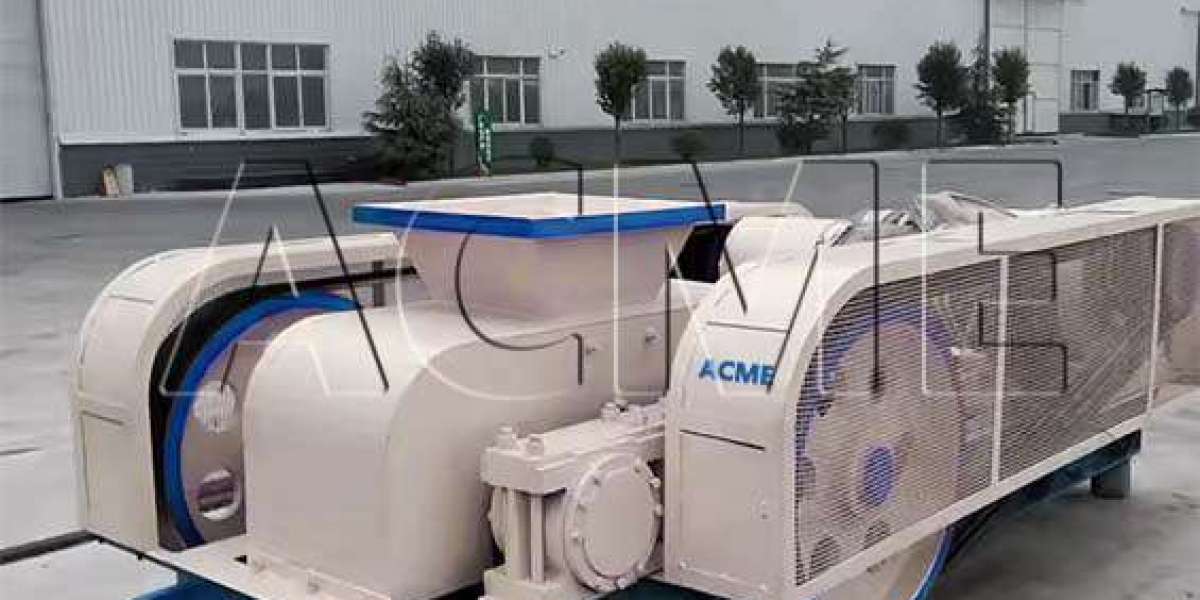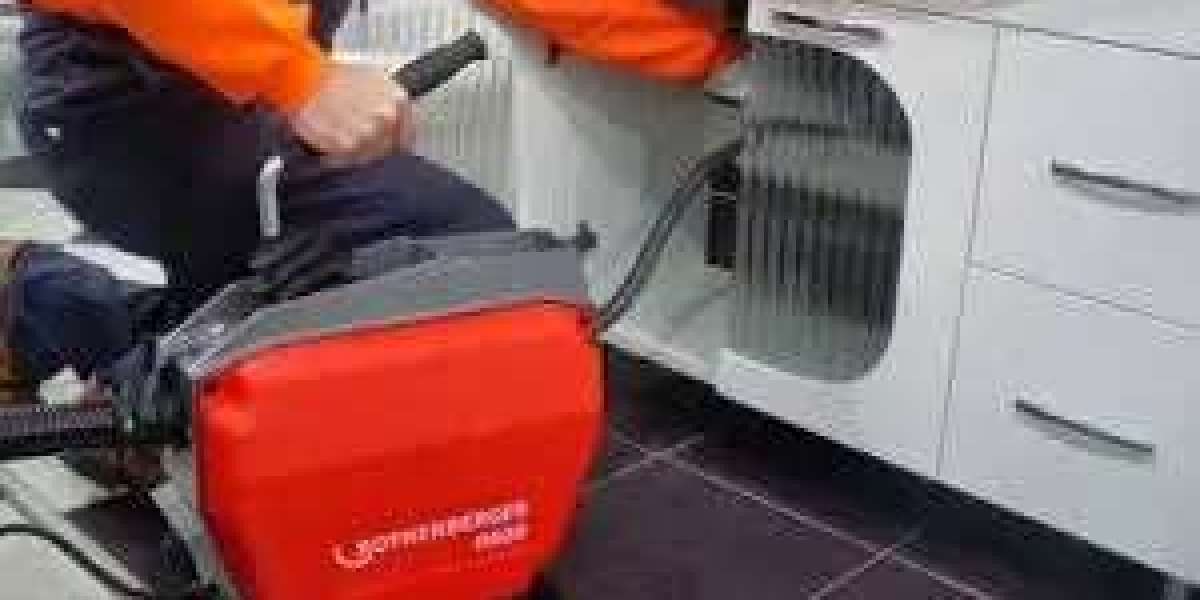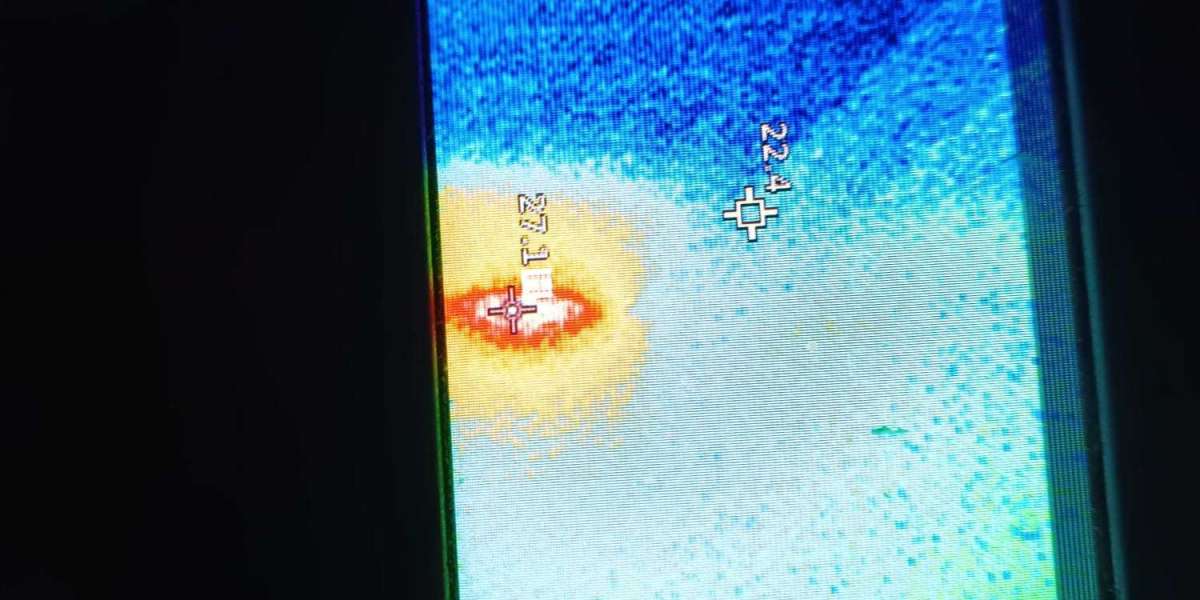The core principle and technical advantages of roller crusher
The working principle of the roller crusher seems simple but contains ingenious design. The core component of the equipment is two parallel mounted horizontal rollers, which achieve material crushing through the extrusion force, shear force and grinding force generated by relative rotation. According to the different roller surface structures, it can be divided into three types: smooth roller, toothed roller and grooved roller, which are suitable for the crushing needs of materials with different characteristics. The smooth roller crusher mainly crushes materials through extrusion, and is suitable for fine crushing of medium-hard materials; the toothed roller crusher uses the shearing and splitting effect of the teeth, which is particularly suitable for processing sticky materials or scenes that require coarse crushing; and the grooved roller crusher opens mutually interlocking grooves on the surface of the two rollers to form a more complex crushing force field.
The diversity of crushing mechanisms is a notable feature of roller crushers. When the material enters the crushing chamber between the two rollers, it is first brought into the crushing zone by the friction generated by the rotation of the rollers. As the gap between the rollers gradually decreases, the pressure on the material increases sharply, and when the stress exceeds the strength limit of the material, crushing occurs. It is worth noting that the toothed roller crusher also provides an additional shear crushing effect - the material is torn and split between the tooth tips. This composite crushing mechanism significantly improves the crushing efficiency of fibrous and flaky materials. Hazemag's HFB series feeder crushers use a unique pick head design and layout, combined with a chain conveyor system, to achieve efficient pre-crushing of materials such as coal and salt mines, with a throughput rate of 250-1100 tons/hour, depending on the model selected.
Compared with traditional jaw crushers and cone crushers, roller crushers have several irreplaceable advantages. The first is precise particle size control. The hydraulic roller crusher of Gongyi Jihong Machinery Manufacturing Co., Ltd. adopts a fully automatic hydraulic adjustment system with an adjustment accuracy of ±1mm, which is far higher than the industry average. The particle size of the finished product can be accurately controlled within the range of 1-3mm, meeting the stringent requirements of high-quality machine-made sand. The second is high energy efficiency. Since the roller crusher adopts the principle of selective crushing, it only applies pressure to the material entering the crushing zone, avoiding the energy waste caused by the "full crushing" of the traditional crusher. Comparative data from a cement plant in Jiangsu shows that when processing the same material, the roller crusher saves 30-40% more energy than the traditional jaw crusher.
The simplicity of the structural design brings convenience to operation and maintenance. Roller crushers are usually composed of limited components such as a frame, crushing rollers, adjustment devices, transmission mechanisms and safety devices. This simple design not only reduces manufacturing costs, but also makes daily maintenance more convenient. The double-toothed roller crusher of Shanghai Sanmei Heavy Mining Machinery Co., Ltd. adopts a modular design. Users can adjust the product particle size by replacing the three tooth types A, B, and C without replacing the entire machine, achieving the flexibility of one machine for multiple uses. In addition, the vibration and noise of the roller crusher are relatively small, the basic design is simple, and special foundation treatment is usually not required during installation, which greatly reduces the threshold for use and site requirements.
The scientific matching of technical parameters is the key to achieving the best performance of the roller crusher. The main technical parameters include roller diameter and length, roller gap, roller speed and processing capacity. Generally speaking, the larger the roller diameter, the smaller the bite angle, and the larger the size of the material that can be processed; and the roller length directly affects the processing capacity. The double-toothed roller crusher of Henan Kaituo Machinery Manufacturing Co., Ltd. has a feed particle size of up to 1200mm. By adjusting the tooth profile and roller spacing, the finished product particle size can be flexibly controlled within the range of 10-300mm. It is particularly suitable for medium or coarse crushing applications that require less powder and more particles. The choice of roller speed is also crucial - too high a speed will cause insufficiently crushed materials to be discharged prematurely, while too low a speed will affect the processing capacity. Practice has shown that the circumferential speed of the roller of the smooth roller crusher should be 1.5-7.7m/s, while the toothed roller crusher should be 1.2-1.9m/s.
Advances in wear-resistant technology have significantly extended the service life of roller crushers. Modern roller crushers use a variety of wear-resistant materials and technologies to cope with different working conditions: high manganese steel is suitable for occasions with greater impact, and obtains higher surface hardness through work hardening; tungsten carbide is used in extremely high wear environments, such as the crushing of abrasive materials such as quartz stone; and high-chromium cast iron, with its excellent wear resistance and moderate toughness, has become an economical choice in most cases. Gongyi Jihong Machinery Manufacturing Co., Ltd. provides more than ten types of materials to choose from, including high manganese steel, tungsten carbide, and high-chromium composite roller skins. In the Chifeng iron ore beneficiation project in Inner Mongolia, its 1810 hydraulic roller crusher uses special wear-resistant roller skins, achieving an output of 250 tons per hour while the roller surface life is more than 1.5 times that of ordinary materials.
From an environmental protection perspective, modern roller crushers also have significant advantages. Compared with traditional impact crushers, roller crushing produces significantly less dust. Some advanced models, such as Jihong Machinery's hydraulic roller crusher, are even integrated with a dust-free and environmentally friendly structure. Combined with a spray dust suppression system, this keeps the dust concentration in the workplace below 5mg/m³, far below the national standard limit of 10mg/m³. In addition, the noise level of a roller crusher is usually controlled within 85 decibels, which is 10-15 decibels lower than a hammer crusher of the same processing capacity, greatly improving the working environment.
These technical features together constitute the core competitiveness of the roller crusher in the field of industrial crushing, making it the preferred equipment in many application scenarios. As we analyze specific application cases below, we will more clearly see how these technical advantages are translated into actual production benefits.
Diversified application scenarios and industry solutions
Roller crushers, with their flexible operating principles and adjustable crushing characteristics, demonstrate remarkable adaptability in modern industrial production. From traditional mining crushing to the emerging recycling of construction waste, from coal pretreatment to high-value-added mineral processing, roll crushing technology continues to expand its application boundaries, providing efficient and cost-effective crushing solutions for various industries. This section will use typical industry cases to demonstrate how roll crushers meet the specific needs of different fields and create significant economic and environmental benefits.
Mining and Metallurgical Industry: The Backbone of Efficient Crushing
In the field of coal mining, roller crushers play an irreplaceable role. Hazemag's HFB series feeder crushers are specially designed for coal mines. They adopt the principle of horizontal roller crushing and pre-crush the materials directly on the working surface to make the materials reach a size suitable for transportation by belt conveyors. This integrated design eliminates the traditional transit crushing link and is particularly suitable for underground coal and salt mining. Actual operating data shows that the HFB1414 model has a processing capacity of 700-1100 tons/hour and an installed power of 132-320kW, which can meet the continuous production needs of large coal mines. The unique value of the double-toothed roller crusher in coal mine applications lies in its ability to process raw coal containing gangue. It can be directly crushed after simple iron and impurity removal without pre-gangue removal, which significantly simplifies the coal preparation process and reduces investment and operating costs.
The demand for roller crushers in metal mines focuses on wear resistance and processing capacity. The hydraulic roller crusher of Gongyi Jihong Machinery Manufacturing Co., Ltd. adopts high-chromium composite roller skin and special carbide inlay technology. It has achieved an output of 250 tons per hour in the Chifeng iron ore beneficiation project, and the finished product particle size is stably controlled at 2-5mm, meeting the feeding requirements of the ball mill. Compared with the traditional two-stage crushing system of jaw crusher + cone crusher, the single-stage roller crushing system saves about 35% of energy consumption and 25% of floor space, while reducing maintenance workload by more than 20%. The double-tooth roller crusher of Shanghai Shanmei Heavy Mining Machinery Co., Ltd. is optimized for high-hardness metal ores (such as basalt and river pebbles). By strengthening the tooth roller structure and improving the transmission system, the equipment can still maintain stable operation when crushing materials with compressive strength ≤160MPa.
The processing of metallurgical auxiliary materials is another important application scenario for roller crushers. Metallurgical auxiliary materials such as sintered ore, limestone, and dolomite usually need to be crushed to a particle size range of 5-30mm. Roller crushers are an ideal choice due to their precise particle size control and low over-crushing rate. The double-toothed roller crusher of Henan Kaituo Machinery Manufacturing Co., Ltd. has performed well in the sintered ore crushing section of many steel companies. Through the specially designed wolf tooth shape, it not only achieves an adjustable discharge particle size of 3-50mm, but also controls the over-crushing rate (<3mm content) to below 15%, significantly improving the utilization rate of sintered ore. Compared with traditional hammer crushers, roller crushers also have the advantage of strong temperature adaptability when processing hot sintered ore. The roller surface can withstand material temperatures below 300°C without significantly affecting the service life.
Building materials and construction industry: key equipment for green production
The production of sand and gravel aggregates is undergoing a transformation from traditional extensive to modern refined production, and roller crushers play a core role in this process. Gongyi Jihong Machinery Manufacturing Co., Ltd. has equipped two 1510 hydraulic double-roll crushers for the 80 million cubic meter sand and gravel line of China Construction Fifth Bureau with an annual output. The particle size of the finished product is precisely controlled at 1-3mm. The machine-made sand produced has a rounded shape and reasonable grading, which completely replaces natural sand for the preparation of high-performance concrete. Compared with traditional impact sand making machines, the particle shape of double-roll sand making is closer to natural sand, with fewer edges and corners, and the fineness modulus can be controlled within the ideal range of 2.4-3.0, which improves the workability and strength of concrete. The fully automatic double-roll sand making machine is also equipped with an intelligent control system that can monitor the operating status of the equipment in real time and automatically adjust parameters to ensure the best production results and flexibly respond to various changes in working conditions.
The resource utilization of construction waste is an inevitable requirement for the sustainable development of cities, and roller crushers have demonstrated unique advantages in this emerging field. Zhengzhou Dingsheng Engineering Technology Co., Ltd.'s mobile double-roll crushing station integrates RAP asphalt recycled material crushing and screening equipment, which can crush construction waste into recycled aggregates directly at the demolition site, with a maximum processing capacity of 200 tons/hour. This on-site crushing mode avoids the long-distance transportation of construction waste, increases the resource utilization rate to more than 85%, and reduces the comprehensive processing cost by 30-40%. The double-toothed roller design is particularly suitable for processing construction waste containing impurities such as steel bars and wood blocks. It reduces the problem of steel bar entanglement through selective crushing, while traditional jaw crushers or impact crushers are prone to shutdowns due to steel bar entanglement. Operational data from a construction waste treatment plant in Beijing shows that after adopting a roller crushing system, the processing energy consumption per ton of construction waste has dropped from 12kWh to less than 8kWh, saving more than 1.5 million yuan in electricity bills annually.
Roller crushing technology is also increasingly being used for raw material crushing in the cement production process. Compared with traditional single-stage hammer crushers, roller crushers have the advantages of low energy consumption, low wear, and simple maintenance when processing cement raw materials such as limestone and marl. Especially for sticky materials with high water content, roller crushers are not easy to clog, and their operating stability is significantly better than other crushing equipment. Shandong Jinxing Group Co., Ltd.'s small and medium-sized roller crushers have performed excellently in the secondary limestone crushing section of many cement plants. Although the adjustment accuracy of their hydraulic systems is relatively low, it is sufficient for the relatively loose requirements of cement raw material crushing, and the investment cost is only 60-70% of high-end models, which is very suitable for local enterprises with limited budgets. Cement industry experts pointed out that after adopting the roller crushing system, the power consumption per ton of raw material crushing can be reduced from 1.8-2.5kWh to 1.2-1.6kWh. Based on an annual output of 1 million tons of cement, the annual electricity saving can reach 400,000-900,000 kWh.
Chemical and environmental protection industries: experts in special crushing
The pretreatment of chemical raw materials places special demands on crushing equipment, and roller crushers are the preferred choice due to their closed design and adjustable crushing force. Double-tooth roller crushers are widely used in the coarse and intermediate crushing of chemical raw materials such as glass, ceramics, calcium oxide, calcite, quartz, marble, etc. The application case of the double-tooth roller crusher of Henan Kaituo Machinery Manufacturing Co., Ltd. in a calcium carbonate powder enterprise in Shandong shows that by configuring a special straight tooth shape, the block calcite is crushed to a grinding particle size of 10-30mm, which not only improves the subsequent grinding efficiency, but also reduces the wear of the mill liner and grinding body, and the overall benefit is improved by about 25%. For chemical occasions with explosion-proof requirements, the roller crusher can also be modified to pneumatic or hydraulic drive to completely avoid the risk of electrical sparks, which is difficult to achieve with other types of crushers.
The demand for roller crushers in the field of solid waste treatment and recycling is growing rapidly. The fully automatic roller sand making machine is specially designed to handle various types of recycled materials. It squeezes and shears the materials through two relatively rotating toothed rollers. The hydraulic system accurately adjusts the distance between the two rollers to meet the crushing requirements of different materials. In the treatment of electronic waste, roller crushers can be used to initially crush components such as circuit boards to facilitate subsequent sorting and recovery of precious metals; in the waste tire recycling line, the double-toothed roller crusher can effectively separate steel cord and rubber, providing high-quality raw materials for the production of recycled rubber. A hazardous waste disposal center in Jiangsu uses a double-toothed roller crusher made of special stainless steel to treat medical waste. It is crushed after high-temperature steam sterilization to ensure the complete inactivation of pathogenic microorganisms. The processing capacity reaches 3-5 tons/hour, meeting the regional medical waste disposal needs.
The development of biomass energy has also created new application space for roller crushers. In biomass power generation and molded fuel production, roller crushers are particularly suitable for processing fibrous materials such as straw and wood chips, and obtain uniform crushed materials through the combined action of shearing and extrusion. Compared with traditional hammer mills, roller crushing reduces energy consumption by 20-30%, and the amount of dust generated is significantly reduced. A biomass power plant in Hebei uses a large double-toothed roller crusher to pre-process cotton straw, with an hourly output of 15-20 tons. The length of the crushed material is controlled at 30-50mm, which fully meets the boiler feed requirements and solves the material entanglement and blockage problems caused by traditional crushing methods.
Special materials and emerging applications: a stage for innovative breakthroughs
Asphalt pavement recycling poses special challenges to crushing equipment, and roller crushers are an ideal choice due to their low low-temperature sensitivity and wear resistance. RAP (recycled asphalt pavement) materials are usually hard at room temperature and contain aged asphalt. Traditional impact crushers are prone to excessive crushing and heat accumulation. Zhengzhou Dingsheng Engineering Technology Co., Ltd.'s RAP asphalt recycled material crushing and screening equipment adopts a low-speed, high-torque double-toothed roller design. It has achieved fine grading of milling materials in multiple provincial highway maintenance projects, and the 3-5-7mm output is adjustable, providing high-quality aggregate for hot-recycled asphalt mixtures. Actual engineering data shows that after the RAP material crushed by roller is mixed with new material at a ratio of 30%, the road performance of the asphalt mixture fully meets the requirements of high-grade highways, and the processing cost is reduced by more than 40% compared with traditional methods.
Glass recycling is another special application of roller crushers. The double-tooth roller crusher of Henan Kaituo Machinery Manufacturing Co., Ltd. has achieved perfect separation of glass and plastic in the glass crushing test machine. By selecting the appropriate tooth shape and rotation speed, the glass is crushed to the ideal particle size while the plastic remains relatively intact, which greatly simplifies the subsequent sorting process. This selective crushing feature has unique value in the treatment of composite material waste. The operating data of a glass recycling company in Jiangsu shows that the use of the optimized double-tooth roller crushing system has increased the purity of glass recovery from 85% to more than 95%, while energy consumption has been reduced by 25%, and the annual profit has increased by more than 2 million yuan.
The processing of high value-added minerals places higher demands on the precise control capabilities of roller crushers. In the crushing of flaky minerals such as graphite and mica, roller crushers can maintain the mineral crystal structure to the maximum extent through appropriate extrusion and shear force, thereby improving the quality and added value of the final product. A graphite beneficiation plant in Shandong uses a crusher with a special grooved roller surface to process raw ore. Compared with traditional crushing methods, the proportion of large-diameter graphite in the concentrate has increased by 30%, and the product price has increased by 15-20% accordingly. Similarly, in the crushing of soft minerals such as talc and barite, the low over-crushing characteristics of the roller crusher can significantly improve the recovery rate of high value-added ultrafine powders.
From the above cases, we can see that through continuous innovation and professional design, roller crushers have been able to meet the diverse crushing needs in various fields, from traditional mining and metallurgy to emerging environmental protection. Their value is not only reflected in their efficient and stable production performance, but also in their ability to accurately optimize for specific materials and product requirements. This is the key to their continued core position in the field of industrial crushing. With the advancement of materials science and process technology, the application boundaries of roller crushers will continue to expand, creating value for more industries.
Technological innovation and market development trends
The roll crusher industry is undergoing a profound technological transformation. Traditional mechanical adjustment methods are gradually being replaced by intelligent hydraulic systems, breakthroughs have been made in wear-resistant materials science, and intelligent control technology is becoming increasingly prevalent. These innovations not only enhance equipment performance and reliability but also expand its application scenarios, enabling roll crushers to meet the stringent demands of modern industry for energy efficiency, precise control, and environmental protection. This section, based on the latest industry developments and patents, will provide an in-depth analysis of innovation trends and market trends in roll crushers, helping companies and investors seize future development opportunities.
Revolutionary breakthrough in hydraulic and intelligent control technology
The popularity of hydraulic adjustment systems is the most significant technological advancement in roller crushers in recent years. Traditional mechanical adjustment requires adding or removing gaskets to adjust the roller spacing, which is cumbersome to operate and has limited accuracy. Modern hydraulic systems, such as Jihong Machinery's fully automatic hydraulic adjustment device, have an accuracy of ±1mm. The operator only needs to enter the target particle size on the control panel, and the system will automatically complete the adjustment and maintain constant pressure. This technology not only improves the consistency of product particle size, but also compensates for roller surface wear in real time and extends the stable production cycle. Hazemag's HAZTRONIC system goes a step further and optimizes crusher performance through automated programs and pre-programmed apron settings to ensure high consistency in product quality. Actual application data shows that the hydraulic adjustment system can increase the product qualification rate (the proportion that meets the target particle size range) from about 80% to more than 95%, while reducing adjustment downtime by more than 30%.
Intelligent control is gradually becoming the standard feature of high-end roller crushers. The intelligent control system equipped with the fully automatic double-roller sand making machine can monitor the operating status of the equipment in real time, and automatically adjust the parameters according to the material characteristics to ensure the best production results. These systems usually integrate a variety of sensors to continuously monitor key parameters such as bearing temperature, vibration, hydraulic pressure, motor load, and predict potential faults through algorithm analysis. The remote monitoring function of Gongyi Jihong Machinery Manufacturing Co., Ltd. supports automated control of the production line. Users can view equipment status and production data at any time through a mobile phone APP, realizing the innovative model of "Internet + crushing equipment". The operation report of a sand and gravel plant in Jiangsu shows that after the introduction of the intelligent control system, the unplanned downtime of the equipment has been reduced by 70%, the energy consumption per unit product has been reduced by 12%, and the annual benefit has increased by more than 1.5 million yuan.
Variable frequency drive technology brings higher energy efficiency and flexibility to roller crushers. When traditional fixed-speed motor drives encounter materials of different hardness or fluctuations in feed volume, they can often only adapt by adjusting the feed volume, which limits production efficiency. After adopting variable frequency speed regulation, the roller speed can be optimized in real time according to the material characteristics and crushing requirements, maximizing the processing capacity while ensuring the crushing effect. Some double-toothed roller crushers of Shanghai Sanmei Heavy Mining Machinery Co., Ltd. have adopted variable frequency drive, which enables the equipment to continuously adjust the speed within the range of 30-100%, which is particularly suitable for processing construction waste and recycled materials with complex and changeable composition. Actual measured data shows that variable frequency control can increase the processing capacity of the equipment by 15-25% at the same power consumption, or reduce energy consumption by 10-15% at the same processing volume.
Innovative progress in wear-resistant materials and structural design
The application of composite wear-resistant materials has greatly extended the service life of roller crushers. Traditional high-manganese steel roller surfaces often have a limited lifespan when crushing highly abrasive materials. Frequent replacement not only increases costs but also affects production continuity. Modern composite wear-resistant technologies, such as the high-chromium composite roller skins and tungsten carbide hard alloys provided by Jihong Machinery, provide more than ten material options, which can make the roller surface life more than 1.5 times that of traditional materials. These materials achieve the best balance between hardness and toughness by optimizing the alloy composition and heat treatment process. Even more advanced are gradient composite materials, in which the hardness gradually decreases from the surface to the inside, which not only ensures surface wear resistance, but also maintains the impact resistance of the matrix. After an iron ore beneficiation plant in Inner Mongolia adopted tungsten carbide inlaid roller surfaces, the continuous working time was extended from 800 hours to more than 1,500 hours, saving approximately 800,000 yuan in maintenance costs annually.
The modular roller surface design provides users with greater flexibility and economy. Traditional integral rollers often need to be replaced as a whole after local wear, resulting in a waste of resources. Modern modular design divides the roller surface into multiple independently replaceable wear-resistant segments or tooth blocks. For example, the double-tooth roller crusher of Shanghai Sanmei Heavy Mining Machinery Co., Ltd. provides three replaceable tooth types: A, B, and C. Each tooth type corresponds to a product particle size. Users can adjust the product particle size by replacing the tooth type without replacing the entire machine. This "one machine for multiple uses" design significantly reduces the user's overall investment cost and is particularly suitable for application scenarios with a wide variety of products and frequent switching. The practice of a building materials company in Hebei Province shows that after adopting modular roller surfaces, the replacement time is shortened from the original 8 hours to 2 hours, and the spare parts inventory cost is reduced by more than 60%.
Structural optimization design improves equipment performance while reducing manufacturing costs. The application of modern simulation technologies such as finite element analysis (FEA) and computational fluid dynamics (CFD) enables engineers to optimize the structure of key components such as rollers, bearing seats, and frames, reducing material usage while ensuring strength. By improving the bearing arrangement and lubrication system, Brückner Servtec's roller crusher has extended the service life of large bearings by 30-50%, significantly reducing maintenance frequency. Another important innovation is the application of a planetary gear transmission system, which changes the traditional single-point drive to a multi-point drive, which not only makes the rollers more evenly stressed, but also reduces the size of the transmission system, making the equipment structure more compact. After Shandong Jinxing Group Co., Ltd.'s small and medium-sized roller crushers adopted this design, the weight of the entire machine was reduced by 15%, while the processing capacity was increased by 10%.
Continuous upgrading of environmental protection and safety technologies
Dust control technology has become an essential feature of modern roller crushers. Traditional crushing operations often generate a lot of dust, which not only pollutes the environment but also endangers the health of workers. The latest solutions, such as the dust-free and environmentally friendly structure integrated by Jihong Machinery, control the dust concentration in the workplace to below 5mg/m³ through a combination of closed design, spray dust suppression and negative pressure suction. Even more advanced is the dry mist dust suppression system, which atomizes water into fine particles below 10μm, which collides with the dust and settles together. The water consumption is only 1/10 of that of traditional spraying, but it can achieve better dust suppression effects. After a cement plant in Henan installed a dry mist system, the dust concentration in the crushing workshop dropped from 25mg/m³ to below 3mg/m³, while avoiding the problem of over-wetting of materials caused by traditional spraying.
Noise control technology has significantly improved the working environment. The noise level of a roller crusher itself is relatively low, but large equipment may still generate noise exceeding 85 decibels when running at high speed. Modern noise reduction technology starts from three aspects: the source, the transmission path, and the receiving point: optimizing the gear design and using high-precision processing to reduce meshing noise; lining the casing with sound-absorbing materials and installing a soundproof cover; and independently isolating auxiliary equipment such as motors and fans. Zhengzhou Dingsheng Engineering Technology Co., Ltd.'s mobile crushing station uses comprehensive noise reduction measures to control the overall noise level of the equipment to below 75 decibels, meeting the environmental requirements for urban construction waste treatment.
The intelligence of the safety protection system has greatly improved the reliability of the equipment. Traditional mechanical overload protection (such as spring safety devices) has a slow response speed and is inconvenient to adjust. Modern hydraulic overload protection systems can release overload pressure within milliseconds to protect core components from damage. Even more advanced is the predictive protection technology, which detects potential problems such as bearing wear and uneven wear of roller surfaces in advance by monitoring small changes in parameters such as vibration, temperature, and current. Hazemag's HFB series feeder breakers are equipped with an exclusive hydraulic adjustment system with a tramp iron protection function. When uncrushable objects enter, the roller gap is automatically increased to discharge them, reducing downtime and lowering operating costs.
Market structure and competition analysis
The global market is growing steadily. According to Market Research Future, the crushing equipment market is expanding at an average annual rate of 5.4%, with roller crushers, a key category, accounting for approximately 20% of the market share. This growth is primarily driven by infrastructure development, mining development, and circular economy policies. Market growth in the Asia-Pacific region, particularly in China, is significantly higher than the global average, primarily due to continued urbanization and large-scale infrastructure investment. Emerging markets such as India and Southeast Asia are also showing strong demand for small and medium-sized crushing equipment, providing ample opportunities for cost-effective Chinese manufacturers.
The competitive landscape of the industry presents a differentiated division of labor. The high-end market is dominated by technologically advanced companies such as Jihong Machinery and Bruckner Servtec, which serve medium and large mines and building materials groups with advanced functions such as hydraulic control and intelligent monitoring; the mid-end market is home to professional manufacturers such as Shanghai Shanmei Heavy Mining Machinery Co., Ltd. and Zhengzhou Dingsheng Engineering Technology Co., Ltd., which have established local advantages in specific areas such as construction waste treatment and coal mine crushing; while the low-end market is composed of many regional small manufacturers, which mainly obtain local small projects through price competition. It is worth noting that the industry is undergoing mild consolidation, and leading companies are expanding their product lines and market coverage through mergers and acquisitions. For example, Jihong Machinery has grown from a regional manufacturer to a national brand through technology accumulation and brand building, and has begun to expand into the international market.
Product differentiation has become a key competitive focus. Leading companies are no longer pursuing a full-line, all-inclusive offering, but are instead focusing on specific market segments. Jihong Machinery, with its core competencies of "leading hydraulic system technology" and "full-cycle service," focuses on serving the sand and gravel aggregate and metal mining markets. Hazemag specializes in feeder crushing solutions for coal and salt mines, with its HFB series demonstrating unique advantages in underground environments. Zhengzhou Dingsheng Engineering Technology Co., Ltd. excels in mobile crushing plants, particularly suited for construction waste disposal and short-term projects. This specialized division of labor avoids price wars driven by homogeneity, enabling each company to achieve reasonable profits in its respective market segment.
Innovation in service models is reshaping the industry's value chain. The traditional one-time equipment sales model is gradually shifting to full life cycle services. Leading manufacturers such as Jihong Machinery provide complete solutions from model selection and design, installation and commissioning to maintenance and upgrades, and spare parts supply. Its fast service commitment of "3-5 hours on site in Henan, and 24 hours response nationwide", as well as the guarantee policy of "2-year warranty for the whole machine and 3-year extended warranty for roller skins", have greatly reduced the user's operational risks. Even more cutting-edge is the preventive maintenance service based on the Internet of Things, which monitors the status of equipment in real time, detects potential problems in advance, arranges maintenance, and minimizes downtime. Some companies have also tried new business models such as equipment leasing and charging by crushing volume, which has lowered the initial investment threshold for users.
From a global perspective, Chinese roll crusher manufacturers are transforming from followers to innovators. With a complete industrial chain, rapid market response capabilities and continuous R&D investment, Chinese companies have approached or even surpassed their international counterparts in key technology areas such as hydraulic control and intelligent monitoring. Leading companies such as Jihong Machinery have not only steadily increased their domestic market share, but have also begun to export equipment and technical services to markets such as Southeast Asia, Africa, and the Middle East, demonstrating the global competitiveness of Chinese manufacturing. In the future, with the in-depth implementation of the "Belt and Road" initiative and the development of global green mining, Chinese roll crusher companies are expected to play a more important role on the international stage.








